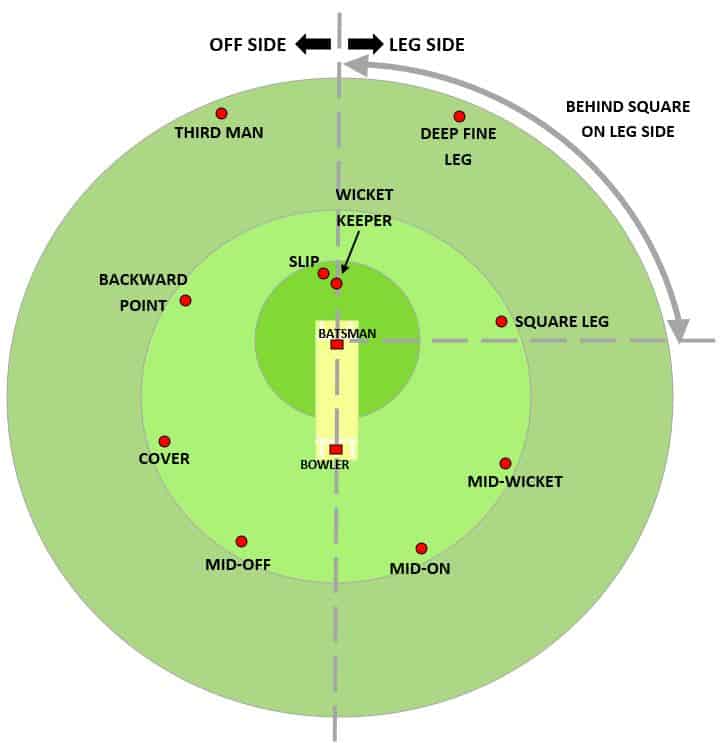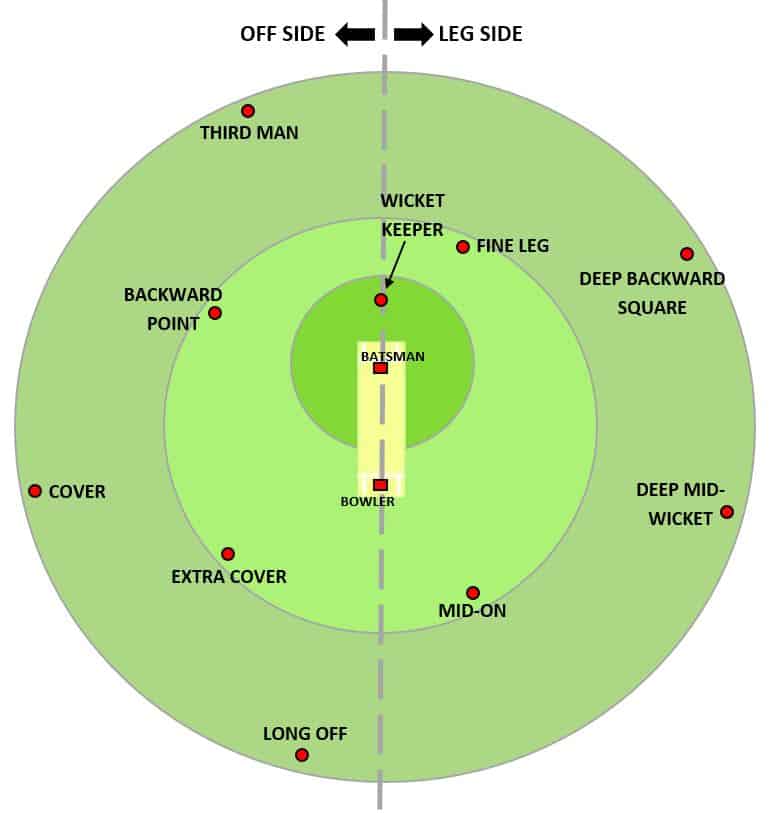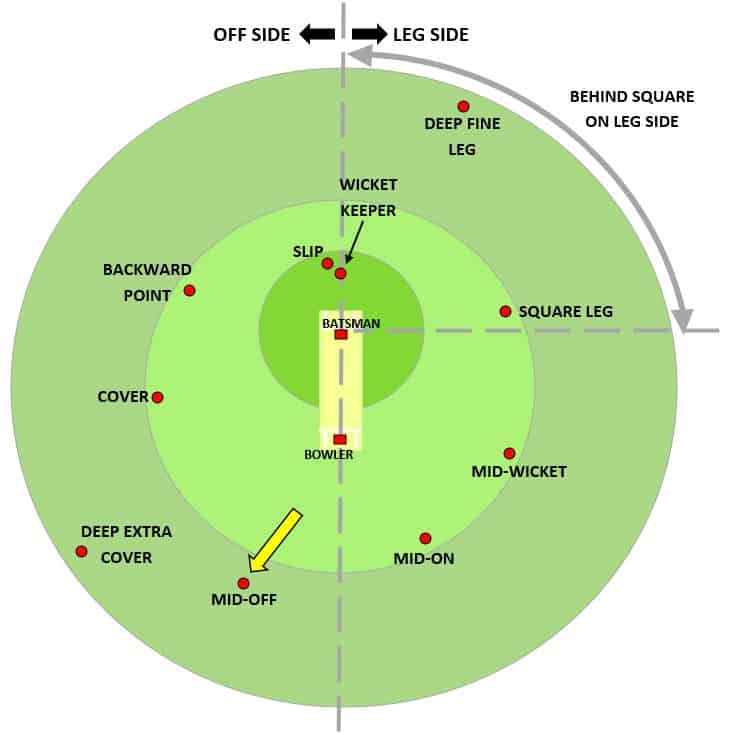T20 cricket is an exciting, shorter format of the game that features fast paced action with plenty of heavy hitting. The wide range of strokeplay and skills on show make it the brand of cricket that is most likely to appeal to newcomers to the sport. The nuances of test match cricket can often be difficult for the layperson to understand, whereas the simple task of hitting as many boundaries as possible and outscoring the other team in 120 balls is remarkably simple. It’s easy to see why cricket’s governing bodies like the ICC have chosen the T20 format as the one which will lead cricket’s charge into new countries and communities.
Because T20 is so reliant on providing maximum entertainment, restrictions need to be put in place so that teams on the field cannot adopt ultra-conservative approaches to the game. Think about it, would T20 cricket be anywhere near as fun to watch if the fielding captains were allowed to place 9 fielders on the boundary? I’ll answer that one for you – definitely not!
So, if you want to know exactly what sort of restrictions are placed on fielding sides during a T20 match, this post will explain everything. I’ll cover what the restrictions are and how they differ at different points in a match, and I’ll also cover some more general rules that apply to the entire innings. Throughout, I’ll show you some helpful diagrams so you can see exactly what I’m referring to! Let’s begin…
What Are The Fielding Restrictions In T20 Cricket?
During the first 6 overs of an innings, a maximum of 2 fielders are allowed to stand outside the 30-yard circle. After this, a maximum of 5 players are allowed outside the circle for the rest of the innings. Additionally, there are only 5 fielders allowed on the leg side of the field at any point in the innings.
These restrictions make it much easier for batsmen to score runs and get off to a good start at the beginning of an innings. A high score in the first 6 overs sets a fantastic platform for the rest of the batsmen to follow, and usually means that an innings will feature more boundaries and will be more entertaining for spectators as a result.
One last rule, which not as many people know about, is that there is only allowed to be 2 fielders behind square on the leg side whenever the ball is bowled. This rule applies to all formats of cricket (not just T20) and helps to stop bowlers bowling short balls exclusively with loads of fielders behind square on the leg side. If bowlers were allowed to do this, it would force batsmen to play hard-to-control shots like the hook and the pull constantly, with multiple fielders in place to catch the ball if they got it wrong. Adding this restriction means that bowling a short ball is still a risk for the bowler, because the batsman can easily pick the gaps on the leg side between the reduced number of fielders if they’re skilled enough.

The diagram above shows a typical field that the bowling captain will set during the first 6 overs of the innings. The 30-yard circle is the light green circle that contains most of the fielders. In the diagram you can see that there are only two fielders on the boundary, satisfying the rule that only two fielders are allowed outside the 30-yard circle in this period. You can also see that there are only 4 fielders on the leg side (mid-on, mid-wicket, square leg & deep fine leg), satisfying the rule that there must be a maximum of 5! Finally, notice how there are only 2 fielders behind square on the leg side of the field – at deep fine leg and square leg. If you’d like to know anything else about all of the different fielding positions in cricket and the skills required to perform in those positions – click here to read the most in depth post on the web!
The diagram below shows a typical field that the fielding captain may choose to use at a later point in the innings. For example, let’s imagine that Jofra Archer is about to bowl the 18th over of the innings. At this time, the batsmen at the crease will be trying to launch an all out attack, so the fielding captain will probably put 5 fielders on the boundary in the batsman’s favoured hitting zones in order to try to keep them quiet.

What Happens If Fielding Restrictions Are Ignored/Broken?
The umpires on the field and the TV replay umpires are the people in charge of determining if there have been any errors made with the placement of fielders during the course of a match. To do this, they will monitor the exact position of the fielders when the ball leaves the bowler’s hand. If any of the fielding restrictions are being broken at this point, then the umpires will automatically call and signal a no ball. Every time a fielding restriction is broken, another no ball will be called.
As I just mentioned, the umpires will only call a no ball if the fielding restrictions are being broken as the ball is bowled. This means that before the ball is bowled, fielders can be in positions which break the rules. But it is up to them to get themselves into position by the time the ball is delivered. For example, imagine we were in the 1st over of a T20 match and the bowler was preparing to begin their run up, with the fielders in the positions shown in the diagram below. You can see in the diagram that there are actually 3 fielders outside the 30-yard circle, when there’s only a maximum of 2 allowed! The fielder that the yellow arrow is pointing to is actually supposed to be inside the 30-yard circle at mid-off, therefore they will have to walk in quickly to make sure they’re in the correct position as the ball gets delivered. If they don’t make it into the circle in time, the umpire will call and signal a no ball.

How Many Fielders Are There In Total?
In T20 cricket the fielding team will have 11 players on the pitch, however, not all of these are referred to as fielders. One of the 11 players will be the bowler responsible for bowling the current over, and one will be the wicket keeper. Therefore, there are only really 9 fielders that can have their positions on the field adjusted from ball to ball.
How Many Fielders Are Allowed On The Off Side In T20 Cricket?
In this post I’ve already covered how there is a maximum of 5 fielders allowed on the leg side for any delivery. This leads many people to wonder if there is a similar rule for the number of fielders allowed on the off side!
The answer to this is no, there is not. A T20 team that is in the field can put as many fielders on the off side as they like! Obviously, the leg side of the field is a huge target for batsmen trying to hit boundaries, so it is always a wise move for the fielding team to keep a decent number of fielders on that side of the field to protect against this. Putting 6 or more fielders on the off side in a T20 match is probably not a very inspired move unless you have a bowler who is capable of bowling consistently wide of the off stump – making it tough for the batsman to hit towards leg! However, it should be noted that the most skilled batsmen will probably still find a way to strike through the leg side, even if you’re bowling lines and lengths that make it hard for them. Therefore, it’s probably best to split your fielders pretty evenly between off side and leg side!
Conclusion
If you’ve read this post fully then you’re armed with all the knowledge you need in order to understand the fielding restrictions in T20 cricket. Hopefully by now you can see that it really isn’t an easy task to keep batsmen quiet in this form of cricket – especially during the powerplay! When a batsman sees that there are only 2 fielders on the boundary, they know that they can take plenty of risks to get their team off to a flying start! Additionally, during the death overs the fielding captain will wish they could have 7 or 8 fielders on the boundary, rather than the maximum allowable 5!
When I’m watching a game, I try to think about what fields I would set in different scenarios and for different players. If you’d like me to post more content about field placements and strategies at different points in a match then feel free to drop me a message on my Instagram or twitter pages – you can find links to those in the sidebar/bottom of this page!
